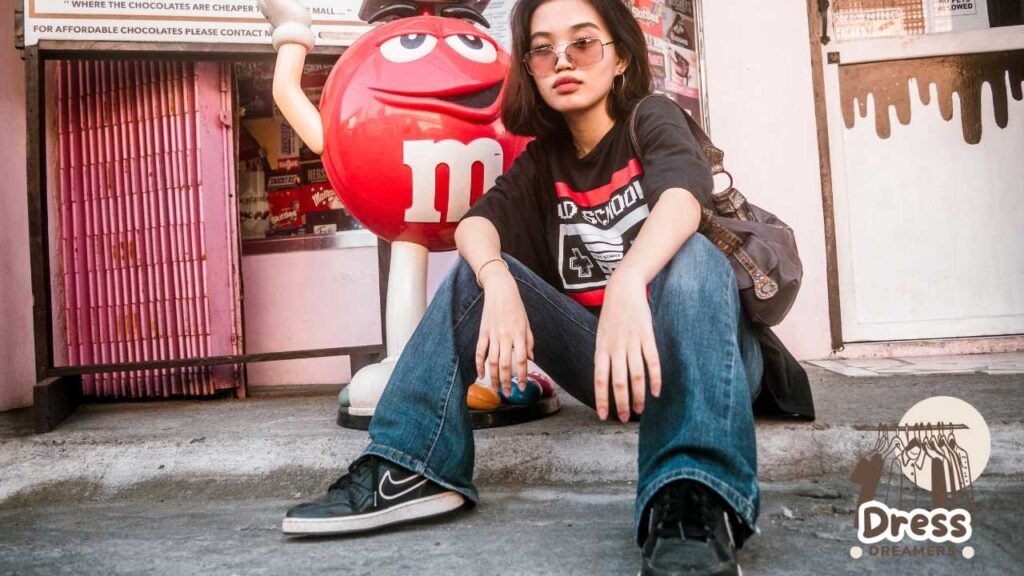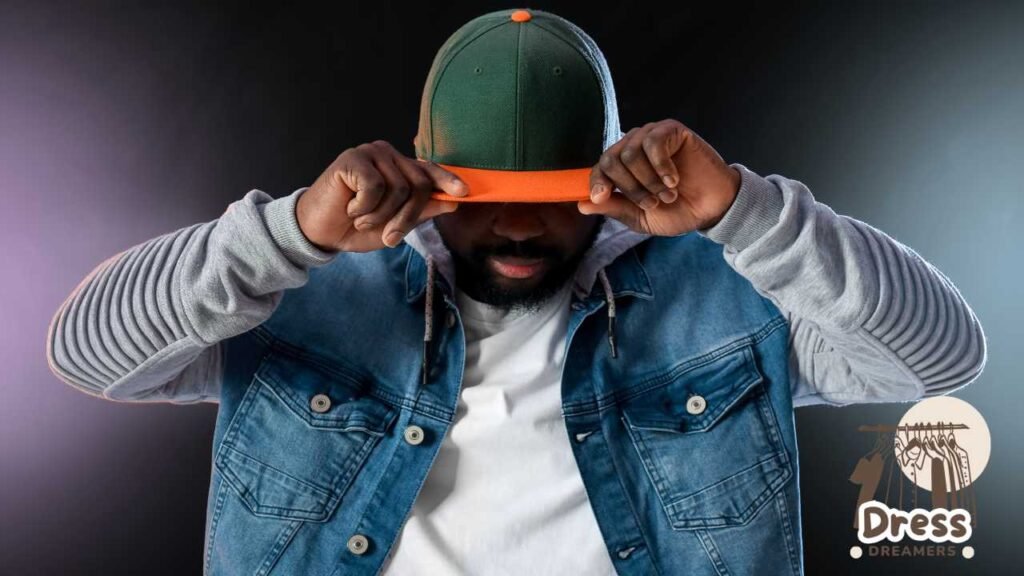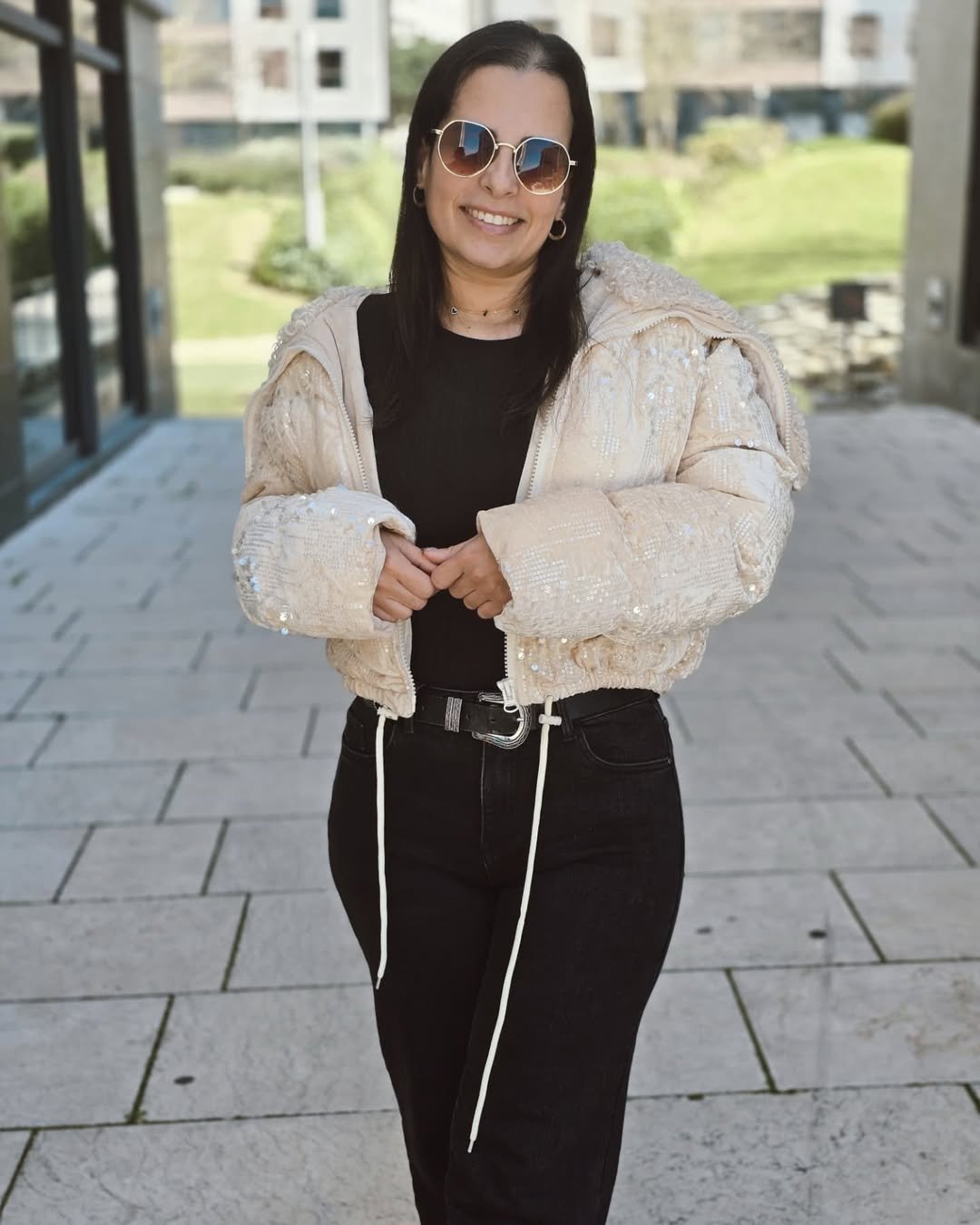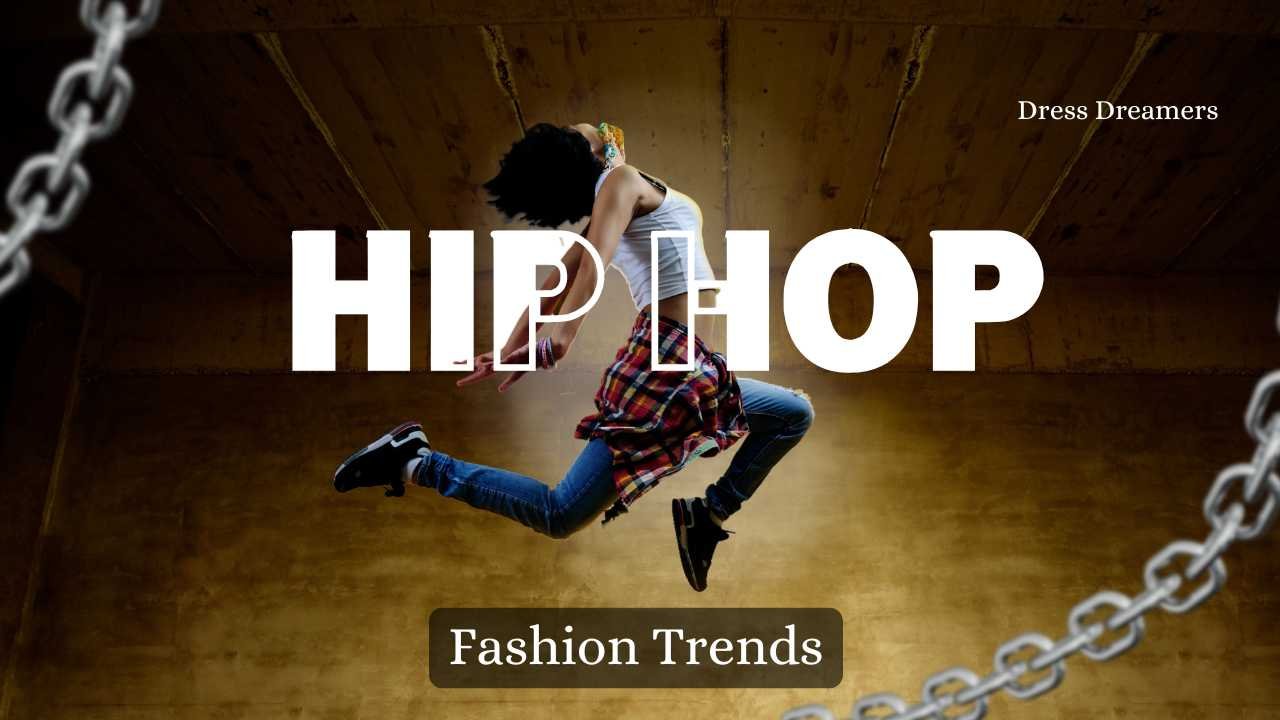The 90s was a pivotal era that saw the rise of hip-hop not just as music but as a powerful culture that shaped the streets from New York to the global stage. The infectious energy of the beats, the thought-provoking lyrics, and the unapologetic attitude of the movement made a lasting impact. But it wasn’t just about sound—it was about Reliving the Bold and Timeless 90s Hip-Hop Fashion Trends that accompanied this powerful movement.
The streets were filled with baggy jeans, oversized jerseys, and bold accessories, making strong statement pieces that left an indelible mark on the world of style. Every outfit was a true reflection of the unapologetic, rebellious spirit of the time, turning everyday wear into a cultural phenomenon.
“Fashion is the armor to survive the reality of everyday life.” — Bill Cunningham
A New Era of Style Emerges
The 90s wasn’t just another era in style—it was the rise of a hip-hop culture that reshaped the streets and set the tone for a global fashion shift. Emerging from the heart of New York, this movement wasn’t merely about music; it was about making a statement. The infectious rhythm of the beats and the thought-provoking lyrics became a force of expression, and the fashion that accompanied it was just as bold.
From baggy jeans and oversized jerseys to bold accessories, every piece carried an attitude of defiance. This style made an indelible mark on the world, influencing everything from streetwear to high fashion. A true reflection of the unapologetic, rebellious spirit of the time, 90s hip-hop fashion wasn’t just about what you wore—it was about who you were.

The Rise of Baggy Jeans and Oversized Fits
The 90s era brought the rise of hip-hop fashion, where the streets dictated style, and nothing made a bigger statement than baggy jeans and oversized clothing. This wasn’t just a passing trend—it was a true reflection of the unapologetic, rebellious spirit of the time. Worn low on the hips, these bold silhouettes dominated the global stage, blending comfort with attitude.
Oversized jerseys, hoodies, and t-shirts became essential, influencing both underground scenes and mainstream designers. The fashion that accompanied this movement left an indelible mark on the world of style, with brands like JNCO and Knitwear defining the look with wide-leg designs inspired by skater culture. Whether in New York or beyond, this fashion evolution wasn’t just about clothes—it was about identity, confidence, and rewriting the rules.

Signature Elements of 90s Hip-Hop Fashion
| Fashion Element | Description |
| Baggy Jeans | Oversized and worn low, symbolizing rebellion and comfort. |
| Oversized Jerseys | Worn by rap legends, representing street style and team pride. |
| Timberland Boots | Rugged footwear that became a hip-hop staple. |
| Gold Chains & Grills | Symbols of success and affluence in the hip-hop community. |
| Snapbacks & Bucket Hats | Statement headwear inspired by artists like LL Cool J and Tupac. |
“Style is a way to say who you are without having to speak.” — Rachel Zoe
Streetwear Brands That Defined an Era
The 90s era saw the rise of hip-hop fashion transforming the streets into a global stage for bold, unapologetic style. Streetwear brands like FUBU, ECKO, and Triple 5 Soul weren’t just labels; they were a true reflection of the culture and spirit of the time.
Created by pioneers from within the movement, these brands spoke directly to the urban youth, making an indelible mark on the world of style. FUBU, meaning “For Us, By Us,” founded in New York by Daymond John, J. Alexander Martin, Keith Perrin, and Carlton Brown in 1992, embodied this ethos.
With its oversized designs, baggy fits, and eye-catching logos, the brand became a defining part of the fashion that accompanied the movement. More than just clothes, these brands symbolized empowerment, creativity, and the voice of a generation.

Logos and Branding: A Statement of Identity
The 90s era cemented the rise of hip-hop fashion, where logos and brand names became a bold statement on the streets and the global stage. Brands like Nike, Adidas, and Timberland weren’t just clothing—they were symbols of status, identity, and belonging.
The fashion that accompanied this movement made an indelible mark on the world of style, with oversized branding dominating everything from footwear to accessories. The iconic Air Force 1 sneakers by Nike became a staple in the culture, gaining legendary status through artist endorsements and collaborations. Whether rocking baggy fits or oversized gear, wearing the right brand was a true reflection of the unapologetic, rebellious spirit of the time.

Accessories That Made a Bold Impact
The 90s era of hip-hop fashion wasn’t just about clothing—it was about the statement pieces that completed the look. Bold accessories became an essential part of the culture, turning everyday outfits into symbols of identity and status. Chunky gold chains, oversized pendants, snapbacks, and bucket hats dominated the streets, making an indelible mark on the world of style.
Brands like Starter and Mitchell & Ness defined the snapback trend, while Kangal’s bucket hats, famously worn by LL Cool J and Tupac Shakur, became legendary. The fashion that accompanied this movement was a true reflection of the unapologetic, rebellious spirit of the time, proving that accessories weren’t just add-ons—they were statements of power, influence, and individuality.

Essential Accessories:
| Accessory | Popularity in 90s Hip-Hop |
| Gold Chains | Heavy, oversized, and a status symbol. |
| Grillz | Custom diamond or gold teeth covers. |
| Bandanas | Tupac’s signature style piece. |
| Bucket Hats | Worn by LL Cool J, adding a casual street vibe. |
| Snapback Hats | Associated with brands like Starter and Mitchell & Ness. |
“Hip-hop is not just music. It is also a way of life, it is a spirit that connects people.” — DJ Kool Herc
Icons Who Revolutionized 90s Hip-Hop Fashion
The 90s era was a pivotal time when hip-hop fashion took over the streets and made an indelible mark on the world of style. Influential artists like Tupac Shakur, The Notorious B.I.G., Salt-N-Pepe, Aaliyah, and Lauryn Hill shaped trends with their bold, unapologetic looks.
Their unique styles were a true reflection of the rebellious spirit of the time, making oversized fits, baggy jeans, and signature statement pieces part of everyday wear. From Tupac’s bandanas and Timberland boots to Aaliyah’s Tommy Hilfiger outfits, their impact still echoes in today’s fashion.
- Tupac Shakur: His oversized shirts, bandanas, and Timberland boots embodied a fearless attitude.
- The Notorious B.I.G.: Rocked baggy Coogi sweaters and bucket hats, setting trends in luxury streetwear.
- Salt-N-Pepa: Their high-top sneakers and colorful jackets celebrated empowerment in hip-hop culture.
- Aaliyah: She blended baggy styles with crop tops, making Tommy Hilfiger a staple in 90s fashion.
- Lauryn Hill: Her effortless mix of oversized t-shirts and baggy jeans showcased individuality and artistry.

Legendary Artists and Their Signature Styles:
| Artist | Signature Fashion Style |
| Tupac Shakur | Bandanas, Timberland boots, and baggy jeans. |
| The Notorious B.I.G. | Coogi sweaters, fedoras, and oversized sunglasses. |
| Salt-N-Pepa | Colorful jackets, high-top sneakers, and bold accessories. |
| Aaliyah | Tommy Hilfiger crop tops and baggy jeans. |
| Missy Elliott | Oversized tracksuits and bold statement pieces. |
“Being perfectly well-dressed gives one a tranquility that no religion can bestow.” — Ralph Waldo Emerson
The Lasting Influence of 90s Hip-Hop Style
The 90s era left an indelible mark on the world of fashion, as hip-hop style moved beyond the streets to influence high-end designers and global brands. The rise of this culture introduced bold, unapologetic streetwear elements that still shape modern trends.
Today, we see a true reflection of that movement in brands like Supreme, Off-White, and Yeezy, which incorporate baggy silhouettes, oversized fits, and statement pieces inspired by the rebellious spirit of the time.

Fashion Revivals and Modern-Day Collaborations
The 90s era of hip-hop fashion continues to make an indelible mark on the world of style, with brands reviving its bold, unapologetic aesthetics. This movement is a true reflection of the culture and rebellious spirit of the time, bringing back baggy jeans, oversized silhouettes, and nostalgic statement pieces. High-end designers and streetwear giants alike embrace these influences, blending past and present in fresh collaborations.
- Tommy Hilfiger x Aaliyah Tribute: Honoring the late star’s love for baggy styles and crop tops.
- Supreme x Timberland: A modern take on the iconic boots that defined 90s street fashion.
- FUBU Relaunch: The legendary brand returns, celebrating its legacy in hip-hop culture.
- Nike Air Force 1 Collaborations: Reimagining the classic sneaker worn throughout the 90s.
- Luxury Meets Streetwear: Brands like Off-White mix oversized fits with premium design.
How Hip-Hop Fashion Transformed High Fashion
The 90s era of hip-hop fashion made an indelible mark on the world of style, shaping not only street culture but also high-end luxury brands. This movement became a true reflection of the rebellious, unapologetic spirit of the time, influencing some of the biggest names in fashion. Designers have embraced baggy jeans, oversized silhouettes, and bold statement pieces, merging urban aesthetics with couture craftsmanship.
- Marc Jacobs: His Spring/Summer 2017 collection featured oversized fits, bucket hats, and vibrant hues inspired by hip-hop culture.
- Balenciaga: Demna Gvasalia brought back the baggy, oversized aesthetic reminiscent of 90s streetwear.
- Chanel: The brand’s Spring/Summer 2022 collection incorporated bold denim, bucket hats, and luxurious streetwear elements.
- Dior: Kim Jones infused hip-hop fashion into Dior Men’s Fall 2023 collection with collaborations celebrating the culture.
- Louis Vuitton: The late Virgil Abloh masterfully blended high fashion with New York street influences, redefining modern luxury.

High-End Brands Influenced by 90s Hip-Hop Fashion:
| Luxury Brand | Hip-Hop Influence |
| Louis Vuitton | Virgil Abloh’s designs fused hip-hop with luxury. |
| Balenciaga | Oversized silhouettes inspired by hip-hop. |
| Marc Jacobs | Streetwear influences in runway collections. |
| Dior | Hip-hop collaborations with street artists and musicians. |
“Fashion is about something that comes from within you.” — Ralph Lauren
Cultural Legacy and Enduring Relevance
The 90s era of hip-hop fashion remains a pivotal part of culture, making an indelible mark on the world of style beyond just clothing. This movement was a true reflection of the bold, unapologetic, and rebellious spirit of the time, resonating across generations. Whether through nostalgia, self-expression, or the influence of legendary artists, its impact endures.
Authenticity: The fashion that accompanied hip-hop was rooted in real urban experiences, shaping its lasting relevance.
Rebellion & Self-Expression: Baggy jeans, oversized fits, and statement pieces challenged societal norms and encouraged individuality.
Nostalgia: The 90s aesthetic remains a source of inspiration, captivating both those who lived it and younger generations.
Influential Figures: Icons like Tupac Shakur, The Notorious B.I.G., and Salt-N-Pepa defined street style, keeping its legacy alive.
Enduring Influence: From New York to the global fashion stage, hip-hop style continues to shape modern trends.

The Future of 90s Hip-Hop Fashion
The 90s era of hip-hop fashion made an indelible mark on the world of style, and its influence shows no signs of fading. This movement was a true reflection of the bold, unapologetic, and rebellious spirit of its time, inspiring modern designers to reinterpret its iconic elements.
As fashion continues to evolve, brands blend nostalgia with fresh creativity, keeping baggy jeans, oversized fits, and statement pieces relevant. While honoring the past, the future of hip-hop culture will embrace new voices, ensuring that its global impact remains as strong as ever.
Modern-Day Influence – How social media, influencers, and celebrities are keeping 90s hip-hop fashion relevant today.
Regional Variations – While New York was a key player, the West Coast, the South, and international scenes also contributed to hip-hop fashion in unique ways.
Women in Hip-Hop Fashion – You touched on Aaliyah and Salt-N-Pepe, but more focus on how female artists shaped trends (e.g., Missy Elliott, Lil’ Kim).
Sneaker Culture Expansion – Although you mentioned Nike and Timberland, sneaker culture exploded in the 90s with Jordan’s, Reebok, and the rise of exclusive collaborations.
Frequently Asked Questions
What defined 90s hip-hop fashion?
90s hip-hop fashion was bold and oversized, featuring baggy jeans, oversized jerseys, Timberland boots, gold chains, snapbacks, and bucket hats, reflecting rebellion, self-expression, and street culture.
Why were baggy jeans so popular in 90s hip-hop?
Baggy jeans symbolized rebellion, comfort, and individuality, influenced by street culture and worn by rap icons like Tupac and The Notorious B.I.G., making them a signature fashion statement.
Which brands dominated 90s hip-hop fashion?
Brands like FUBU, Tommy Hilfiger, Karl Kani, Nike, Adidas, and Timberland dominated, offering oversized fits, bold logos, and stylish streetwear embraced by hip-hop artists and fans worldwide.
What accessories were essential in 90s hip-hop fashion?
Bold accessories like chunky gold chains, grillz, snapback hats, bucket hats, and bandanas were essential, adding personality, status, and flair to 90s hip-hop outfits.
How did hip-hop artists influence 90s fashion trends?
Icons like Tupac, Aaliyah, and The Notorious B.I.G. set trends with their unique styles, inspiring fans globally to embrace baggy fits, statement accessories, and branded streetwear.
Why were Timberland boots popular in hip-hop culture?
Timberland boots were durable, stylish, and associated with streetwear culture. Rappers embraced them as a symbol of toughness, making them a staple in 90s hip-hop fashion.
How did hip-hop fashion influence high fashion?
Hip-hop fashion’s bold aesthetics inspired luxury brands like Louis Vuitton, Balenciaga, and Dior, leading to streetwear collaborations, oversized silhouettes, and urban influences in designer collections.
What role did logos play in 90s hip-hop fashion?
Logos were a status symbol, showcasing brand loyalty and exclusivity. Rappers proudly wore Tommy Hilfiger, Nike, and FUBU, making logos a key element of hip-hop fashion.
Is 90s hip-hop fashion still popular today?
Yes, 90s hip-hop fashion remains influential, with brands reviving baggy jeans, oversized fits, and statement accessories, embraced by modern artists, influencers, and streetwear enthusiasts.
How did women contribute to 90s hip-hop fashion?
Female artists like Aaliyah, Missy Elliott, and Salt-N-Pepa blended femininity with oversized streetwear, crop tops, bold accessories, and vibrant colors, shaping hip-hop fashion trends.
Conclusion
The 90s hip-hop fashion era was more than just a trend—it was a pivotal movement that made an indelible mark on the world of style. With its bold, unapologetic aesthetic and rebellious spirit, it shaped both street culture and high-end designers, proving its lasting influence.
The revival of baggy jeans, oversized fits, and statement pieces today reflects the timeless appeal of this era. Beyond fashion, its impact continues to inspire artists and creatives, reminding us that self-expression and individuality will always be at the heart of hip-hop culture.

Catarina Ferreira – Fashion enthusiast and founder of Dress Dreamers. Based in Lisbon, Portugal, she shares insights on beauty, travel, fashion, and lifestyle. Passionate about inspiring others to express their unique style, Catarina curates trends, outfit ideas, and dressing guides to help you look and feel your best.




